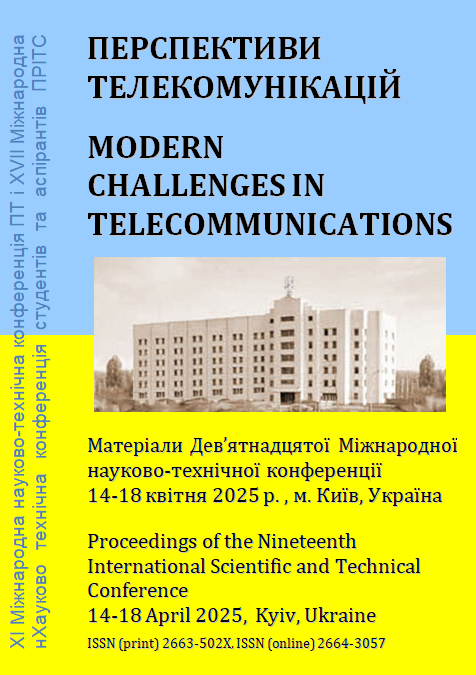ПІДВИЩЕННЯ ЕФЕКТИВНОСТІ ПЕРЕДАЧІ ІНФОРМАЦІЇ В МЕРЕЖАХ 5G ЗА РАХУНОК ТЕХНОЛОГІЙ САМООРГАНІЗАЦІЇ
DOI:
https://doi.org/10.20535/PT2025.2663-502X.330255Ключові слова:
Мобільний зв'язок; 5G; Мережеві системи управління; Ефективність передачі інформації; Самоорганізовані мережі (SON)Анотація
З розвитком мобільного зв’язку та впровадженням технологій 5G зростає потреба у високоефективних, гнучких і автономних мережних системах управління і забезпечення ефективності передачі інформації .
Самоорганізовані мережі (Self Organіzіng Network - SON) є перспективним рішенням, що забезпечує автоматичну конфігурацію, оптимізацію та відновлення мережевих ресурсів без ручного втручання. SON активно використовується в мережах LTE (4G). Для мереж 5G SON має використовувати нові підходи такі як машинне навчання (ML) і штучний інтелект (AI). Крім того, ми представляємо та коментуємо останні пропозиції щодо розгортання SON у мережах 5G. Типові приклади включають поєднання систем SON із такими методами, як віртуалізація мережевих функцій (NFV), Cloud RAN (C-RAN), наднадійні комунікації з низькою затримкою (URLLC), масовий зв’язок машинного типу (mMTC) для IoT.
Посилання
Papidas, A.G.; Polyzos, G.C. Self-Organizing Networks for 5G and Beyond: A View from the Top. Future Internet 2022, 14, 95. https:// doi.org/10.3390/fi14030095
Бондарчук А.П. Самозахист як пріоритетний напрям розвитку інфокомунікацій «Сучасний захист інформації». – Київ: ДУІКТ, 2013 – №1. – С.11-15.
GPP TR 28.861, V0.2.0 (2018–11). Study on the Self-Organizing Networks (SON) for 5G networks (Release 16). 3 February 2022.
##submission.downloads##
Опубліковано
Як цитувати
Номер
Розділ
Ліцензія

Ця робота ліцензується відповідно до Creative Commons Attribution 4.0 International License.
Authors who submit to this conference agree to the following terms:a) Authors retain copyright over their work, while allowing the conference to place this unpublished work under a Creative Commons Attribution License, which allows others to freely access, use, and share the work, with an acknowledgement of the work's authorship and its initial presentation at this conference.
b) Authors are able to waive the terms of the CC license and enter into separate, additional contractual arrangements for the non-exclusive distribution and subsequent publication of this work (e.g., publish a revised version in a journal, post it to an institutional repository or publish it in a book), with an acknowledgement of its initial presentation at this conference.
c) In addition, authors are encouraged to post and share their work online (e.g., in institutional repositories or on their website) at any point before and after the conference.

